Quid du 98b ?
+11
jackdaniels
toulon44
John MAUSER
indianadam
waffenampt
PASCALOU0762
oxi81
lu1900
waldy45
feder504
konopka
15 participants
Page 1 sur 6
Page 1 sur 6 • 1, 2, 3, 4, 5, 6 
 Quid du 98b ?
Quid du 98b ?
Tout est dans le titre : nouveau sur le forum et amateur de Mauser (de poing comme d'épaule), je n'ai pas vu, en faisant une brève recherche, de post sur le sujet du Mauser 98b, se situant entre le G98 et le G98 reconditionné sous Weimar. Si je ne m'abuse, il s'agit d'une production assez réduite de guerre, contemporaine de la Karabiner 98a, avec grosso modo la physionomie du G98 (longueur notamment), mais des "attributs" de la 98a (et plus tard du K98k) : bretelle latérale, hausse plate, levier coudé, pas de crochet sur l'embouchoir, etc.
Je possède un exemplaire à mon avis d'origine, sans marquage sur le tonnerre. J'avais lancé il y a quelque temps le sujet sur un forum américain qui m'avait apporté pas mal de réponse sur cette arme dont on parle assez peu.
Les "spécialistes" de ce forum peuvent-ils apporter leurs lumières?
Je possède un exemplaire à mon avis d'origine, sans marquage sur le tonnerre. J'avais lancé il y a quelque temps le sujet sur un forum américain qui m'avait apporté pas mal de réponse sur cette arme dont on parle assez peu.
Les "spécialistes" de ce forum peuvent-ils apporter leurs lumières?

konopka- Pilier du forum

- Nombre de messages : 2626
Age : 54
Date d'inscription : 08/11/2013
 Re: Quid du 98b ?
Re: Quid du 98b ?
Il me semble qu'on en a parlé, sur le forum, il y a peu ... As-tu épluché les sujets ???
Sinon, LA 98b n'est pas une contemporaine de la Kar 98, dans le sens où cette "carabine", désignée ainsi en raison du mode de port (bretelle latérale), malgré sa longueur, est apparue après 1920.
La désignation a connu un certain flottement, et les premières armes à porter la désignation "Karab. 98b" sur le boîtier sont sorties de chez Simson, seul fabricant autorisé de l'époque, en 1925.
C'est à cette époque que la "Kar.98" a été, sur le papier, renommée "Kar.98a", pour la distinguer de sa "demi-sœur" plus longue ...
Nombre de G98 ont été mis au standard "K98b", avant la standardisation finale de la K98k en 1935.
A+
Sinon, LA 98b n'est pas une contemporaine de la Kar 98, dans le sens où cette "carabine", désignée ainsi en raison du mode de port (bretelle latérale), malgré sa longueur, est apparue après 1920.
La désignation a connu un certain flottement, et les premières armes à porter la désignation "Karab. 98b" sur le boîtier sont sorties de chez Simson, seul fabricant autorisé de l'époque, en 1925.
C'est à cette époque que la "Kar.98" a été, sur le papier, renommée "Kar.98a", pour la distinguer de sa "demi-sœur" plus longue ...
Nombre de G98 ont été mis au standard "K98b", avant la standardisation finale de la K98k en 1935.
A+

feder504- Pilier du forum

- Nombre de messages : 10215
Age : 75
Localisation : en France...pour l'instant...
Date d'inscription : 27/01/2011
 Re: Quid du 98b ?
Re: Quid du 98b ?
Oui, j'ai fait une recherche.... Pas trouvé 
Par contre, j'ai retrouvé du coup un article que m'avait envoyé un "spécialiste" américain, dans lequel je me suis replongé, et récapitulant les différents types de 98b, selon leurs marquages. Tu as raison sur les dates de fabrication, post WWI. Le mien serait un type "S 28", sans marquage sur le tonnerre, mais avec un marquage S 28 dessous et sur quelques autres pièces. Pas de marquage non plus à gauche du boîtier. Poinçons d'inspection encore impériaux (peut-être pour camoufler une nouvelle production, interdite par Versailles). Ce modèle serait le premier type de 98b, avant ceux portant le marquage Simson sur le tonnerre.
D'autres infos sur des modèles rencontrés par les uns et les autres?
Par contre, j'ai retrouvé du coup un article que m'avait envoyé un "spécialiste" américain, dans lequel je me suis replongé, et récapitulant les différents types de 98b, selon leurs marquages. Tu as raison sur les dates de fabrication, post WWI. Le mien serait un type "S 28", sans marquage sur le tonnerre, mais avec un marquage S 28 dessous et sur quelques autres pièces. Pas de marquage non plus à gauche du boîtier. Poinçons d'inspection encore impériaux (peut-être pour camoufler une nouvelle production, interdite par Versailles). Ce modèle serait le premier type de 98b, avant ceux portant le marquage Simson sur le tonnerre.
D'autres infos sur des modèles rencontrés par les uns et les autres?

konopka- Pilier du forum

- Nombre de messages : 2626
Age : 54
Date d'inscription : 08/11/2013
 Re: Quid du 98b ?
Re: Quid du 98b ?
Houla ! Tu as de la chance ! les S28 sont rarissimes !
Par contre, ils sont encore assez mal connus, et les auteurs qui l'abordent sont contraints de rester dans le domaine de la supposition ...
Il y a un chapitre intéressant sur le S28 dans le livre "Karabiner 98k", Volume I, de Bruce Karem & Michael Steves, paru l'an dernier chez Third Party Press.
Lorsque tu pourras poster des photos, ne manque pas de le faire, car les langues ne vont pas tarder à pendre, chez les Mauserophiles du fofo !!!
A+
Par contre, ils sont encore assez mal connus, et les auteurs qui l'abordent sont contraints de rester dans le domaine de la supposition ...
Il y a un chapitre intéressant sur le S28 dans le livre "Karabiner 98k", Volume I, de Bruce Karem & Michael Steves, paru l'an dernier chez Third Party Press.
Lorsque tu pourras poster des photos, ne manque pas de le faire, car les langues ne vont pas tarder à pendre, chez les Mauserophiles du fofo !!!
A+

feder504- Pilier du forum

- Nombre de messages : 10215
Age : 75
Localisation : en France...pour l'instant...
Date d'inscription : 27/01/2011
 Re: Quid du 98b ?
Re: Quid du 98b ?
bonjour et bienvenuekonopka a écrit:Tout est dans le titre : nouveau sur le forum et amateur de Mauser (de poing comme d'épaule), je n'ai pas vu, en faisant une brève recherche, de post sur le sujet du Mauser 98b, se situant entre le G98 et le G98 reconditionné sous Weimar. Si je ne m'abuse, il s'agit d'une production assez réduite de guerre, contemporaine de la Karabiner 98a, avec grosso modo la physionomie du G98 (longueur notamment), mais des "attributs" de la 98a (et plus tard du K98k) : bretelle latérale, hausse plate, levier coudé, pas de crochet sur l'embouchoir, etc.
Je possède un exemplaire à mon avis d'origine, sans marquage sur le tonnerre. J'avais lancé il y a quelque temps le sujet sur un forum américain qui m'avait apporté pas mal de réponse sur cette arme dont on parle assez peu.
Les "spécialistes" de ce forum peuvent-ils apporter leurs lumières?
Si si si il y en a eu et des longs encore, de longs echanges sur ce sujet precis et interessant !
le pb est que dans la "recherche avancee" tu ne peux pas y entrer que 3 lettres comme "98b", c est bien dommage et handicapant vu le grand nombre de denominations d armes a 3 caracteres.... tu ne trouveras donc pas par ce moyen.
Feder m en a identifie un exemplaire tardif a coup sur, apres 2 ans de recherches de ma part !
C est un fusil rare, je veux dire un vrai et non pas un reconditionné (dit de "transition")
Si tu as des photos, surtout ne te prive pas, vas y...
Alors justement s il n y a rien sur le tonnerre, vois tu un S sur le cote droit ??? en cursive majuscule ou capitale imprimerie ??? n y aurait il pas cote gauche ecrit "Mod. 98" au lieu de "Karab. 98b" ??? ne serait il pas dans la serie des "xxxx f" ????
Allez, photos ...
waldy45- Pilier du forum

- Nombre de messages : 1704
Age : 63
Localisation : BZH
Date d'inscription : 11/06/2010
 Re: Quid du 98b ?
Re: Quid du 98b ?
je n avais pas vu le post entre temps... mais photos STP 
waldy45- Pilier du forum

- Nombre de messages : 1704
Age : 63
Localisation : BZH
Date d'inscription : 11/06/2010
 Re: Quid du 98b ?
Re: Quid du 98b ?
Bon, alors quelques précisions supplémentaires sur mon exemplaire: il a été neutralisé après avoir été rechambré en 8x54 S. Il semble dans son jus avec un assez bon bronzage uniforme, y compris sur les pièces non numérotées (au niveau de la culasse et du verrou de culasse). D'après les infos que j'avais pu récolter à l'époque, il n'est pas forcément bizarre que ces pièces ne soient pas numérotées. Sinon, toutes les pièces, y compris le bois et le garde-main sont au N°. Pour Waldy, non, pas de S sur le côté droit, qui correspond - toujours d'après mes "sources américaines" - au troisième type, après le Simson, et qui comporte alors la mention "Gew. 98" ou "Karab.98" bà gauche du boîtier. Le mien est également nu à cet endroit, normal pour ce premier type. Le numéro de série est très bas, 182 a. Il comporte un marquage régimentaire sur le disque de crosse. Le pontet n'est pas percé comme sur les G98 (ce qui va donc dans le sens d'un modèle qui n'a pas été remonté à partir d'un G98).
Maintenant, place aux photos (prises au moment de l'achat. Depuis, il est passé par un petit nettoyage en douceur afin de ne pas dénaturer sa patine, juste pour nettoyer un peu la crosse et redonner un peu d'éclat au bronzage).
J'attends vos avis

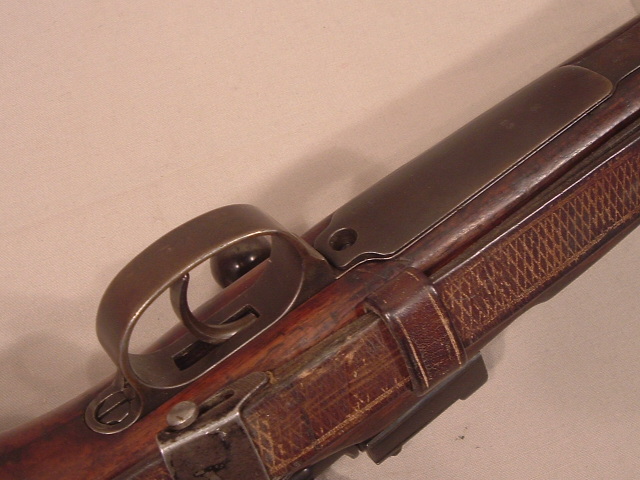

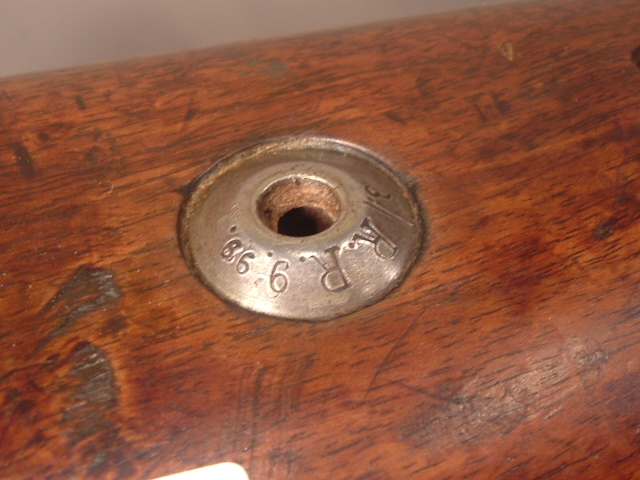
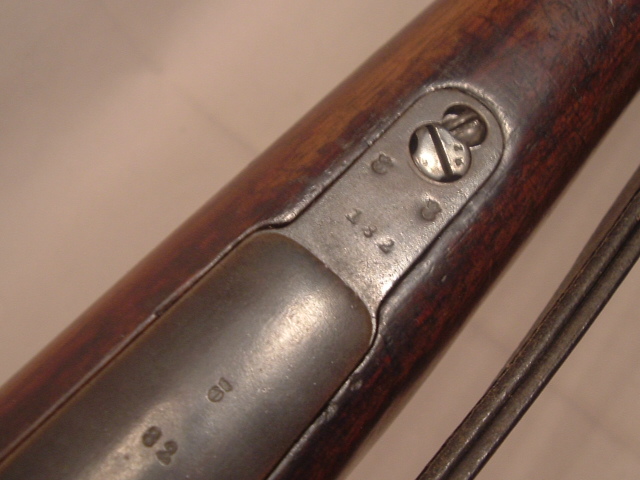

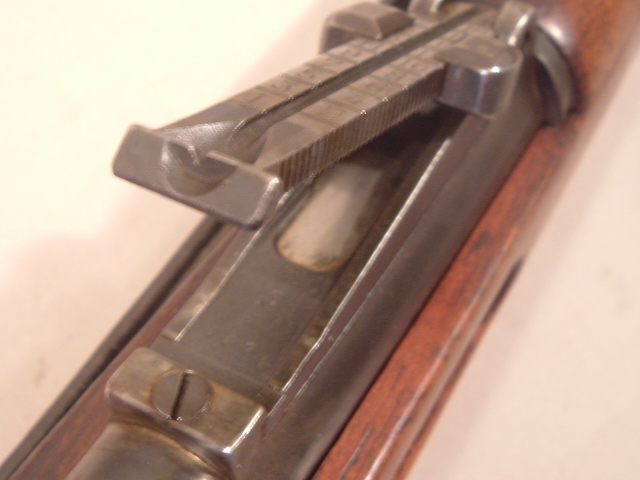


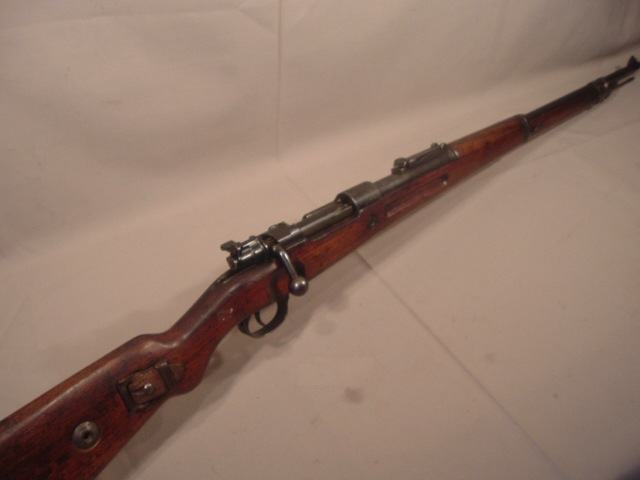
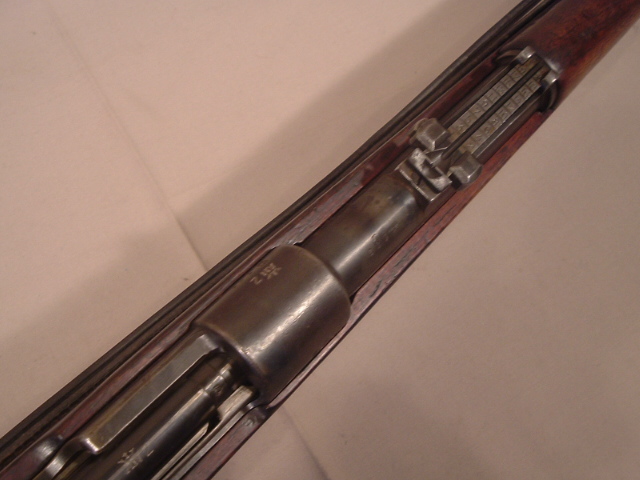

Maintenant, place aux photos (prises au moment de l'achat. Depuis, il est passé par un petit nettoyage en douceur afin de ne pas dénaturer sa patine, juste pour nettoyer un peu la crosse et redonner un peu d'éclat au bronzage).
J'attends vos avis













konopka- Pilier du forum

- Nombre de messages : 2626
Age : 54
Date d'inscription : 08/11/2013
 Re: Quid du 98b ?
Re: Quid du 98b ?
Je pense que tu veux dire 8x64 ?konopka a écrit: il a été neutralisé après avoir été rechambré en 8x54 S.
non, ca peut aussi etre Mod.98 en ecriture gothique cote gauche avec un S cote droit.konopka a écrit: pas de S sur le côté droit, qui correspond - toujours d'après mes "sources américaines" - au troisième type, après le Simson, et qui comporte alors la mention "Gew. 98" ou "Karab.98" bà gauche du boîtier.
Pour l interpretation des poincons que tu as du cote droit du tonnerre, Feder devrait nous en dire plus sous peu
Es tu sur qu il ne s agit pas du bas d un "S" completement a droite du cote droit du tonnerre ? c est justement l endroit exact ou il figure d habitude !
waldy45- Pilier du forum

- Nombre de messages : 1704
Age : 63
Localisation : BZH
Date d'inscription : 11/06/2010
 Re: Quid du 98b ?
Re: Quid du 98b ?
Je pense que tu veux dire 8x64 ?
Non, je dis bien 8x54 S - c'est en tout cas ce qui est inscrit sur le côté gauche du tonnerre (mais je n'y connais rien en calibres

Es tu sur qu il ne s agit pas du bas d un "S" completement a droite du cote droit du tonnerre ? c est justement l endroit exact ou il figure d habitude !
À mon avis, c'est plutôt un chiffre - un peu petit pour un S, non?
Apparemment, le S dans ce cas c'est plutôt ça :


konopka- Pilier du forum

- Nombre de messages : 2626
Age : 54
Date d'inscription : 08/11/2013
 Re: Quid du 98b ?
Re: Quid du 98b ?
Belle pastille régimenté Weimar !!! 
3 ou 8/R.R.9.99. , a savoir ?
Merci
3 ou 8/R.R.9.99. , a savoir ?
Merci
Cordialement...Patrice.... lu1900@gmail.com

lu1900- Pilier du forum

- Nombre de messages : 10615
Age : 66
Localisation : Quadrant alfa
Date d'inscription : 06/01/2009
 Re: Quid du 98b ?
Re: Quid du 98b ?
3 ou 8/R.R.9.99. , a savoir ?
C'est 3/R.R.9.99

konopka- Pilier du forum

- Nombre de messages : 2626
Age : 54
Date d'inscription : 08/11/2013
 Re: Quid du 98b ?
Re: Quid du 98b ?
Si cela intéresse certains, je mettrais bien en ligne le très bon article rédigé par l'Américain Mark J. Wieringa (et Peter Kuck) sur les différentes variantes connues du (de la ?) Karabiner 98b qu'il m'avait - si je me souviens bien - fait parvenir après en avoir parlé sur un forum US il y a - déjà  - une dizaine d'années.
- une dizaine d'années.

konopka- Pilier du forum

- Nombre de messages : 2626
Age : 54
Date d'inscription : 08/11/2013
 Re: Quid du 98b ?
Re: Quid du 98b ?
Bjr
Oui, l article m interesse... Merci !
Oui, l article m interesse... Merci !
waldy45- Pilier du forum

- Nombre de messages : 1704
Age : 63
Localisation : BZH
Date d'inscription : 11/06/2010
 Re: Quid du 98b ?
Re: Quid du 98b ?
Here you are, Sir ! 
( Mark J. Wieringa & Peter Kuck)
Mark J. Wieringa & Peter Kuck)
KARABINER COLLECTORS NETWORK May 1993
The Karabiner 98b
Some Observations and Speculations
Written by Mark J. Wieringa
Edited with additional illustrations by Peter Kuck 03/02/2003, 04/26/2006
When I (Wieringa ) committed to do this article some time back, I was hopeful that some serious research with a good number of recorded rifle markings would lead to some fairly solid conclusions. Unfortunately, this has not turned out to be the case. However, the assembled data is interesting, and this article presents a summary of the analysis conducted, along with some tentative findings.
The database for this analysis consists of information on 34 different Karab.98b examples. Some of these were not much more than receivers when recorded; it is no secret that it is tough to find a reasonable example of this model. The data were arrayed by ascending serial numbers, as it appears the main Simson production run is one serial sequence regardless of year of manufacture. If true, this would indicate a total Simson production of about 60,000. This seems to be reasonable given a 100,000-man post—WW I German army, the fact that this total excludes Gew.98 rifles converted to Karab.98b configuration, and the fact the infantry continued to use Gew.98 rifles modified with the new s.S. rear sight assembly. It also is compatible with the observed rarity of Karab.98b today.
A few words should be said about the design of the Karab.98b. At the end of WW I, the Allies stipulated that Germany’s small army have a very high proportion of cavalry units, the experiences of that conflict having demonstrated that horse cavalry was obsolete. The Allies reasoned that this restriction would further reduce the effectiveness of the Reichsheer by having the bulk of it equipped as cavalry troopers. The Germans adroitly sidestepped this inconvenience by treating its cavalry units as mounted infantry, and outfitted them accordingly. The Karab.98b is a direct result of this thinking; it is an infantry rifle, with a few concessions for carry on horseback such as the side— mounted sling and turned—down bolt. As such, its lineage is more directly traced to the “Radfahrer Gewehr” (special Gew.98 for bicycle troops) and the “Schutztruppen Gewehr” (special Gew.98 for mounted infantry in German Southwest Africa) than to the Kar.98a.
Six major variations of the Karab.98b were identified, based on markings. The basic physical characteristics of the model do not vary significantly, physical differences being largely confined to the use of reworked Gew.98 parts as compared with new Simson production parts. A mix seems to be the norm, with individual rifles ranging from all new parts to having many reworked or original Gew.98 parts. The six major variations identified are described below; it is entirely possible that others may exist.
Major Variations
“S 28” - This variation is a blank receiver rifle having Imperial style Crown/O acceptance markings, on most parts, an Imperial style test proof eagle, but no sidewall marking. The bottom flat of the receiver is marked with a large “S 28”, and several other parts are marked “S 28” as well. This marking may indicate that “S 28” was Simson’s “S-code,” but no Karab.98b has yet surfaced with S/28 on the top of the receiver ring, and it is not likely that any exist. The Imperial markings in this case are post-WW I inspection marks, and not old pre-1918 markings on reworked parts. It has been rumored, but not proven, that Imperial stamps were intentionally used to mask new production. Perhaps a more likely explanation is that no other markings had been given approval by military authorities, and that old (or old-style) dies were used until the down-wing eagle was adopted. Given the Imperial flavor of this variation, it has been placed first in the chronology of variations, even though several other rifles have lower serial numbers. It is possible this example represents a separate serial range, or it may represent an anomaly in a single serial sequence. Mark Wieringa examined only one example in the 9300 no letter range. The other examples examined by Peter Kuck are s/n 1063a and s/n 9456a. Receiver inspection is three Crown/O stamps.

Dated Simson - These rifles have full receiver markings of “SIMSON & Co., SUHL.” with the date of manufacture. Manufacture dates of 1924 (s/n 9456 a) and 1925 (s/n 2632) are confirmed, and 1926 is reliably reported but not verified. Receiver sidewalls are still marked “Gew.98.” Although dated Simson Karab.98b have been established, it is possible that both Karab.98b and Gew.98 variants were produced with Simson receiver markings. Very few of these dated Simsons turn up, and most seem to have been later converted to Kar.98k configuration, or sporterized. These appear to come second in the chronological sequence as one has some “S 28” parts, they still have the “Gew.98.” sidewall marking, and the serial number range fits. Receiver proofing consists of the typical Weimar down-wing eagle test proof, and down-wing Eagle/6, Eagle/6, Eagle/14 on 1924 dates, or Eagle/6, Eagle/14, Eagle/14 on the 1925 dates. Serial range is 371 to 1200a on the few-recorded examples.
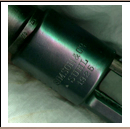
S Receiver - This variation is similar in markings to the dated Simson, except that the receiver lacks the full markings, having only a capital “S” on the top. This mark is centered on the receiver, about two—thirds of the way to the front edge, and is similar in size to the capital letters used in the normal receiver markings. The serial range, acceptance markings, and “Gew.98.” sidewall marking indicate it falls third in the chronological sequence. Receiver proofing is down-wing Eagle/6, Eagle/14, Eagle/14. Eagle/14 inspection appears only on the earliest Karab.98b, and is not seen after this variation.
Blank Receiver - This is the most common Karab.98b variation, having the script “Karab.98b.” or “Gew.98” sidewall marking, a blank receiver top, and an “S” (of various forms) on the right front of the receiver, forward of the inspection markings. The data array shows that this variation logically follows the previous variation, the Simson “S” having been moved from the top of the receiver to the right side, and the “Gew.98” marking superseded by the “Karab.98b” inscription. This variation actually encompasses two sub-variations: those using reworked Gew.98 receivers and those using new production receivers. Reworked Gew.98 receivers are sometimes seen, and may be intermixed throughout the production run. The same may be true of other parts. Serial numbers start in the low “b” range and extend into the high “e” or low “f” range, based on the admittedly statistically inadequate observation sample.

Initially, it was thought that the shape of the Simson “S” on the right receiver might be a type of code for the date of production. Six distinct forms of the “S” are known, as shown in the accompanying chart. Unfortunately, although some general trends can be seen, a pattern did not emerge when the receiver inspection/acceptance markings and “S” type were arranged by ascending serial number. In general, the slanted block “S” was the last style, preceded by the vertical block “S”. The runic and stylized “S” was intermingled, and the standard capital “S” was normally found on the earliest rifles. The script “S” was observed only on the “Mod.98” variation discussed below. Twenty-five Karab.98b of this variation were available for this analysis of receiver markings.
Receiver inspection/acceptance markings also showed no clear pattern. Eagle/6 and Eagle/43 are the most common, and are found throughout production. Eagle/76 and Eagle/46 appear sporadically, while Eagle/33 does not appear until the high “c” range. The order or combination of these four inspection stamps is inconsistent, and no conclusions concerning them can be drawn at this time.

“Mod.98” Marked - The last variation is the most enigmatic. Although both recorded examples are in the “b” block, it is felt that these are very likely out of the normal serial sequence. The receiver tops are blank, and yet another variation of the Simson “S,” a script letter, is in the usual location. Test proof eagles are very similar. However, the acceptance office numbers are quite different from other “b” block examples, being Eagle/81 and Eagle/67 in addition to the more familiar Eagle/43. The sidewalls of this variation are marked “Mod.98.” in script, in a style similar to, but distinctive from that on “S/27”, “27”, “ax”, and “ce” coded Kar.98k. As it is known that the “Mod.98.” marking was established by a September 1930, army order, it seems reasonable to assume that these must be late Karab.98b made between late 1930 or 1931 and about 1933. The “b” block serial numbers can not be explained with the information available.

S Variant
s/n 8868a
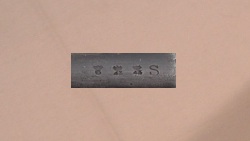
Runic S Variant
s/n 1123 f, s/n 7615 s,

Gew.98 Rework - This loose grouping is composed of standard Gew.98 rifles converted to Karab.98b. Examples commonly retain their original serial numbers, and as they are not part of the Simson production serial sequence they are not included in the analysis described above. For the same reason, no estimate of their numbers can be made. Conversion was accomplished by replacing the rear sight assembly with the K98k type rear sight, turning down the bolt and the relieving the stock under the bolt knob, replacing the lower band with the wider side—loop version, cutting the buttstock for the side—mounted sling, patching in the lower sling swivel plate cutout, removing the upper band hook, adding the tube-and—washer assembly (if needed), and notching the follower to block the bolt.
Many of these rifles had their receivers scrubbed, but often retained their original Gew.98 serial numbers. Others still have their original maker inscriptions, and are only Karab.98b by their configuration. The “Gew.98” sidewall marking can also either be present or scrubbed, and possible remarked “Karab.98b.” Examples of this variation are exceptionally diverse in markings and features, just as their contemporary Gew.98 (with new rear sights) counterparts are. This is likely explained by the fact that they were converted to Karab.98b configuration by various facilities and at different times.
Karab.98b of any variation can be found with single—digit numbers stamped beside the three inspection/acceptance marks on the right side of the receiver. While normally associated with the inspection markings, more than three additional numbers (and occasionally letters) can be present. It is thought that these are “re-inspection” markings from reworking or rebuilding. Of the 35 Karab.98b recorded, eight had these additional markings on the right receiver. On a couple of rifles, a very small down-wing Eagle/6 was seen above the first (left) inspection stamp. It is suspected that this mark has the same meaning as the earlier Crown/RC “Revisions Commission” marking found on Gew.98 and Kar.98a. If true, then this marking indicates a rifle flagged by the primary inspector as having a minor flaw, which was later accepted by a review board.

The author wishes to thank those KCN members and others who shared information from their rifles for this analysis. Anyone who has information on additional variations, or has corrections on anything presented here, is encouraged to contact the author (Mark Wieringa) directly or through the KCN (now defunct).

(
 Mark J. Wieringa & Peter Kuck)
Mark J. Wieringa & Peter Kuck)KARABINER COLLECTORS NETWORK May 1993
The Karabiner 98b
Some Observations and Speculations
Written by Mark J. Wieringa
Edited with additional illustrations by Peter Kuck 03/02/2003, 04/26/2006
When I (Wieringa ) committed to do this article some time back, I was hopeful that some serious research with a good number of recorded rifle markings would lead to some fairly solid conclusions. Unfortunately, this has not turned out to be the case. However, the assembled data is interesting, and this article presents a summary of the analysis conducted, along with some tentative findings.
The database for this analysis consists of information on 34 different Karab.98b examples. Some of these were not much more than receivers when recorded; it is no secret that it is tough to find a reasonable example of this model. The data were arrayed by ascending serial numbers, as it appears the main Simson production run is one serial sequence regardless of year of manufacture. If true, this would indicate a total Simson production of about 60,000. This seems to be reasonable given a 100,000-man post—WW I German army, the fact that this total excludes Gew.98 rifles converted to Karab.98b configuration, and the fact the infantry continued to use Gew.98 rifles modified with the new s.S. rear sight assembly. It also is compatible with the observed rarity of Karab.98b today.
A few words should be said about the design of the Karab.98b. At the end of WW I, the Allies stipulated that Germany’s small army have a very high proportion of cavalry units, the experiences of that conflict having demonstrated that horse cavalry was obsolete. The Allies reasoned that this restriction would further reduce the effectiveness of the Reichsheer by having the bulk of it equipped as cavalry troopers. The Germans adroitly sidestepped this inconvenience by treating its cavalry units as mounted infantry, and outfitted them accordingly. The Karab.98b is a direct result of this thinking; it is an infantry rifle, with a few concessions for carry on horseback such as the side— mounted sling and turned—down bolt. As such, its lineage is more directly traced to the “Radfahrer Gewehr” (special Gew.98 for bicycle troops) and the “Schutztruppen Gewehr” (special Gew.98 for mounted infantry in German Southwest Africa) than to the Kar.98a.
Six major variations of the Karab.98b were identified, based on markings. The basic physical characteristics of the model do not vary significantly, physical differences being largely confined to the use of reworked Gew.98 parts as compared with new Simson production parts. A mix seems to be the norm, with individual rifles ranging from all new parts to having many reworked or original Gew.98 parts. The six major variations identified are described below; it is entirely possible that others may exist.
Major Variations
“S 28” - This variation is a blank receiver rifle having Imperial style Crown/O acceptance markings, on most parts, an Imperial style test proof eagle, but no sidewall marking. The bottom flat of the receiver is marked with a large “S 28”, and several other parts are marked “S 28” as well. This marking may indicate that “S 28” was Simson’s “S-code,” but no Karab.98b has yet surfaced with S/28 on the top of the receiver ring, and it is not likely that any exist. The Imperial markings in this case are post-WW I inspection marks, and not old pre-1918 markings on reworked parts. It has been rumored, but not proven, that Imperial stamps were intentionally used to mask new production. Perhaps a more likely explanation is that no other markings had been given approval by military authorities, and that old (or old-style) dies were used until the down-wing eagle was adopted. Given the Imperial flavor of this variation, it has been placed first in the chronology of variations, even though several other rifles have lower serial numbers. It is possible this example represents a separate serial range, or it may represent an anomaly in a single serial sequence. Mark Wieringa examined only one example in the 9300 no letter range. The other examples examined by Peter Kuck are s/n 1063a and s/n 9456a. Receiver inspection is three Crown/O stamps.

Dated Simson - These rifles have full receiver markings of “SIMSON & Co., SUHL.” with the date of manufacture. Manufacture dates of 1924 (s/n 9456 a) and 1925 (s/n 2632) are confirmed, and 1926 is reliably reported but not verified. Receiver sidewalls are still marked “Gew.98.” Although dated Simson Karab.98b have been established, it is possible that both Karab.98b and Gew.98 variants were produced with Simson receiver markings. Very few of these dated Simsons turn up, and most seem to have been later converted to Kar.98k configuration, or sporterized. These appear to come second in the chronological sequence as one has some “S 28” parts, they still have the “Gew.98.” sidewall marking, and the serial number range fits. Receiver proofing consists of the typical Weimar down-wing eagle test proof, and down-wing Eagle/6, Eagle/6, Eagle/14 on 1924 dates, or Eagle/6, Eagle/14, Eagle/14 on the 1925 dates. Serial range is 371 to 1200a on the few-recorded examples.

S Receiver - This variation is similar in markings to the dated Simson, except that the receiver lacks the full markings, having only a capital “S” on the top. This mark is centered on the receiver, about two—thirds of the way to the front edge, and is similar in size to the capital letters used in the normal receiver markings. The serial range, acceptance markings, and “Gew.98.” sidewall marking indicate it falls third in the chronological sequence. Receiver proofing is down-wing Eagle/6, Eagle/14, Eagle/14. Eagle/14 inspection appears only on the earliest Karab.98b, and is not seen after this variation.
Blank Receiver - This is the most common Karab.98b variation, having the script “Karab.98b.” or “Gew.98” sidewall marking, a blank receiver top, and an “S” (of various forms) on the right front of the receiver, forward of the inspection markings. The data array shows that this variation logically follows the previous variation, the Simson “S” having been moved from the top of the receiver to the right side, and the “Gew.98” marking superseded by the “Karab.98b” inscription. This variation actually encompasses two sub-variations: those using reworked Gew.98 receivers and those using new production receivers. Reworked Gew.98 receivers are sometimes seen, and may be intermixed throughout the production run. The same may be true of other parts. Serial numbers start in the low “b” range and extend into the high “e” or low “f” range, based on the admittedly statistically inadequate observation sample.

Initially, it was thought that the shape of the Simson “S” on the right receiver might be a type of code for the date of production. Six distinct forms of the “S” are known, as shown in the accompanying chart. Unfortunately, although some general trends can be seen, a pattern did not emerge when the receiver inspection/acceptance markings and “S” type were arranged by ascending serial number. In general, the slanted block “S” was the last style, preceded by the vertical block “S”. The runic and stylized “S” was intermingled, and the standard capital “S” was normally found on the earliest rifles. The script “S” was observed only on the “Mod.98” variation discussed below. Twenty-five Karab.98b of this variation were available for this analysis of receiver markings.
Receiver inspection/acceptance markings also showed no clear pattern. Eagle/6 and Eagle/43 are the most common, and are found throughout production. Eagle/76 and Eagle/46 appear sporadically, while Eagle/33 does not appear until the high “c” range. The order or combination of these four inspection stamps is inconsistent, and no conclusions concerning them can be drawn at this time.

“Mod.98” Marked - The last variation is the most enigmatic. Although both recorded examples are in the “b” block, it is felt that these are very likely out of the normal serial sequence. The receiver tops are blank, and yet another variation of the Simson “S,” a script letter, is in the usual location. Test proof eagles are very similar. However, the acceptance office numbers are quite different from other “b” block examples, being Eagle/81 and Eagle/67 in addition to the more familiar Eagle/43. The sidewalls of this variation are marked “Mod.98.” in script, in a style similar to, but distinctive from that on “S/27”, “27”, “ax”, and “ce” coded Kar.98k. As it is known that the “Mod.98.” marking was established by a September 1930, army order, it seems reasonable to assume that these must be late Karab.98b made between late 1930 or 1931 and about 1933. The “b” block serial numbers can not be explained with the information available.

S Variant
s/n 8868a

Runic S Variant
s/n 1123 f, s/n 7615 s,

Gew.98 Rework - This loose grouping is composed of standard Gew.98 rifles converted to Karab.98b. Examples commonly retain their original serial numbers, and as they are not part of the Simson production serial sequence they are not included in the analysis described above. For the same reason, no estimate of their numbers can be made. Conversion was accomplished by replacing the rear sight assembly with the K98k type rear sight, turning down the bolt and the relieving the stock under the bolt knob, replacing the lower band with the wider side—loop version, cutting the buttstock for the side—mounted sling, patching in the lower sling swivel plate cutout, removing the upper band hook, adding the tube-and—washer assembly (if needed), and notching the follower to block the bolt.
Many of these rifles had their receivers scrubbed, but often retained their original Gew.98 serial numbers. Others still have their original maker inscriptions, and are only Karab.98b by their configuration. The “Gew.98” sidewall marking can also either be present or scrubbed, and possible remarked “Karab.98b.” Examples of this variation are exceptionally diverse in markings and features, just as their contemporary Gew.98 (with new rear sights) counterparts are. This is likely explained by the fact that they were converted to Karab.98b configuration by various facilities and at different times.
Karab.98b of any variation can be found with single—digit numbers stamped beside the three inspection/acceptance marks on the right side of the receiver. While normally associated with the inspection markings, more than three additional numbers (and occasionally letters) can be present. It is thought that these are “re-inspection” markings from reworking or rebuilding. Of the 35 Karab.98b recorded, eight had these additional markings on the right receiver. On a couple of rifles, a very small down-wing Eagle/6 was seen above the first (left) inspection stamp. It is suspected that this mark has the same meaning as the earlier Crown/RC “Revisions Commission” marking found on Gew.98 and Kar.98a. If true, then this marking indicates a rifle flagged by the primary inspector as having a minor flaw, which was later accepted by a review board.

The author wishes to thank those KCN members and others who shared information from their rifles for this analysis. Anyone who has information on additional variations, or has corrections on anything presented here, is encouraged to contact the author (Mark Wieringa) directly or through the KCN (now defunct).

konopka- Pilier du forum

- Nombre de messages : 2626
Age : 54
Date d'inscription : 08/11/2013
 Re: Quid du 98b ?
Re: Quid du 98b ?
Alors 3ième escadron du 9iéme Reiter Régiment et 99ième arme .konopka a écrit:3 ou 8/R.R.9.99. , a savoir ?
C'est 3/R.R.9.99
Cordialement...Patrice.... lu1900@gmail.com

lu1900- Pilier du forum

- Nombre de messages : 10615
Age : 66
Localisation : Quadrant alfa
Date d'inscription : 06/01/2009
 Re: Quid du 98b ?
Re: Quid du 98b ?
Sur mon exemplaire se trouve effectivement le marquage S28 sur la face inférieure plate du boîtier, ainsi que sur le dessous de la porte de l'éjecteur (si c'est le bon terme?) et l'anneau de grenadière.
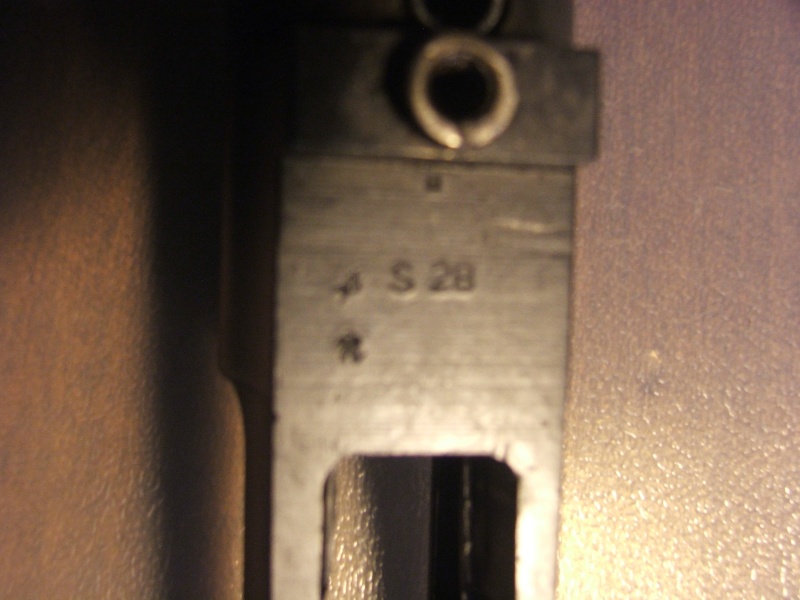

On retrouve le N° de série (très bas : 182 a) à gauche du tonnerre, sur la base du canon à droite, sur la crosse, à l'intérieur de la crosse et à l'intérieur du garde-main, sur l'embouchoir, la base du tenon de baïonnette, la plaque de couche, le fond du magasin et en avant de celui-ci, sur la planchette élévatrice, ainsi que les deux grosses vis de la plaque du magasin. Rien sur la culasse.


On retrouve le N° de série (très bas : 182 a) à gauche du tonnerre, sur la base du canon à droite, sur la crosse, à l'intérieur de la crosse et à l'intérieur du garde-main, sur l'embouchoir, la base du tenon de baïonnette, la plaque de couche, le fond du magasin et en avant de celui-ci, sur la planchette élévatrice, ainsi que les deux grosses vis de la plaque du magasin. Rien sur la culasse.
Dernière édition par konopka le Sam 09 Nov 2013, 17:02, édité 2 fois

konopka- Pilier du forum

- Nombre de messages : 2626
Age : 54
Date d'inscription : 08/11/2013
 Re: Quid du 98b ?
Re: Quid du 98b ?
Alors 3ième escadron du 9iéme Reiter Régiment et 99ième arme .
Qu'est-ce que cela peut nous donner comme indications sur la date/l'utilisation de ce modèle précis ?

konopka- Pilier du forum

- Nombre de messages : 2626
Age : 54
Date d'inscription : 08/11/2013
 Re: Quid du 98b ?
Re: Quid du 98b ?
waldy45 a écrit:Bjr
Oui, l article m interesse... Merci !
Et moi itou, of course ...
Le marquage d'attribution type Weimar est pour la 99ème arme du 3ème escadron du 9ème Régiment de Cavalerie.
Ce type de marquage est entré en vigueur en 1924.
Ton arme a les caractéristiques de celle fabriquées ailleurs que chez Simson, en partie avec des pièces issues de stocks de la WW1. Les sources semblent converger vers une production confidentielle de la BKIW, ex-DWM, à Karlsruhe.
Le n° de code de cette société était en effet "28", attribué en 1925, et l'on sait que ERMA, dont le code était "27", a codé ses fusils "S/27".
Ce code "S/28" ne se retrouve que sur certaines pièces, et sur les boîtiers de culasse au tonnerre vierge, on le trouve dessous, sur la partie plane.
Il existe des preuves comptables qu'une connexion existait entre Mauser et BKIW à cette époque, mais si les sommes en jeu figurent bien sur les tablettes, "on" a soigneusement omis de préciser le genre et le nombre des matériels fournis ...!
Tu as oublié de faire un gros-plan intéressant sur la face gauche du boîtier, pour nous montrer si un aigle précède le n° de série et si oui, quelle est sa forme. Il serait bien aussi de pouvoir visionner les marquages de l'embase de hausse et du dos de la planchette ... Et quel est ce marquage que l'on devine, sur le canon, à droite, derrière l'embase de hausse, près de l'horrible trace de surchauffe laissée par l'abjecte, abominable et honnie neutralisation ?
A priori, l'absence d'aigle devant les poinçons d'épreuve, sur le côté droit du boîtier, est le signe d'une fabrication plutôt précoce mais le fait que ces poinçons soient surchargés de chiffres laisse supposer une épreuve supplémentaire, normalement réservée aux armes "sportérisées", se pourrait-il que, dans le passé d'avant-guerre, une opération de ce genre ait affecté l'arme ? Je pense à un changement de canon, car le fantomatique "8x54 S", dont je me permets de douter de l'existence (mais peut-être est-ce un "Wildcat" germanique ...), n'aurait pu être chambré à partir d'un canon qui l'était déjà en 8x57 ... à moins de faire du "8x57 KK" (Kurz Kartry
... A moins aussi que l'ouvrier chargé d'apposer le calibre n'ait abusé du schnaps ........ ou n'ait pas passé suffisamment de temps à l'école ...
A+
En prévisualisant avant de poster, je m'aperçois qu'une tripotée de messages sont venus répondre en partie à certaines questions, mais, pour ne pas m'être décarcassé pour rien, je poste quand même !
Dernière édition par feder504 le Lun 21 Avr 2014, 11:47, édité 1 fois (Raison : en me relisant, j'ai trouvé 2 fautes d'étourderie, et je n'aime pas ...)

feder504- Pilier du forum

- Nombre de messages : 10215
Age : 75
Localisation : en France...pour l'instant...
Date d'inscription : 27/01/2011
 Re: Quid du 98b ?
Re: Quid du 98b ?
Tu as oublié de faire un gros-plan intéressant sur la face gauche du boîtier, pour nous montrer si un aigle précède le n° de série et si oui, quelle est sa forme.
Voici :

Oui, je sais, pas beau poinçon AN

Et quel est ce marquage que l'on devine, sur le canon, à droite, derrière l'embase de hausse
C'est le même que celui sur le boîtier (aigle + N° de série):
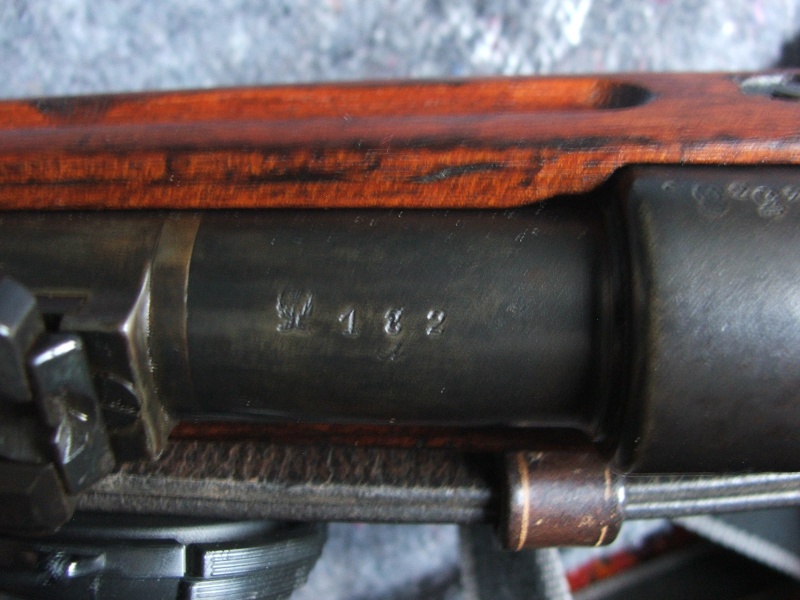
Il serait bien aussi de pouvoir visionner les marquages de l'embase de hausse et du dos de la planchette
Je vais voir ça peut-être cet aprèm'

konopka- Pilier du forum

- Nombre de messages : 2626
Age : 54
Date d'inscription : 08/11/2013
 Re: Quid du 98b ?
Re: Quid du 98b ?
Merci pour les photos 
Ce sont les aigles impériaux (je dirais "impériales" si cet aimable volatile figurait sur des armoiries ...), mais on voit, sur le tenon de recul, un petit poinçon "pré-Waffenamt" qui indique un assemblage à l'ère Weimar ...
Le canon est bien d'origine, mais si mes yeux ne me trompent pas, il me semble que la collerette, où l'on trouve souvent marqué le calibre réel (sur plat de rayures), est plus courte que sur un G98 normal, paraissant vissée plus avant dans le boîtier.
Je suppose donc (j'ai dit : suppose, hein ...) que ce canon a subi une transformation du type ".30-06 CC", consistant en un raccourcissement de la chambre par ablation à l'arrière de la longueur correspondant à un filet du pas de vis, puis mise en forme de ladite chambre pour une cartouche de 8x54 sans doute tirée de la 8x57 d'origine, peut-être dans un but de déclassement de catégorie.
A priori, aucun poinçon n'indique une homologation par un banc d'épreuve de ce calibre fantôme, sans doute resté à l'état de projet, à moins que l'ancien possesseur de cette arme rare ait tout simplement (et naïvement) pensé que cette opération lui permettrait d'éviter l'horreur d'une neutralisation définitive, ce qui est finalement arrivé, causant un important retard dans la rédaction de ce post, que je tape à un doigt, l'autre main masquant sur l'écran la partie de l'image où figure l'horrible poinçon maudit, pour m'éviter de vomir sur mon clavier ...
A+
Ce sont les aigles impériaux (je dirais "impériales" si cet aimable volatile figurait sur des armoiries ...), mais on voit, sur le tenon de recul, un petit poinçon "pré-Waffenamt" qui indique un assemblage à l'ère Weimar ...
Le canon est bien d'origine, mais si mes yeux ne me trompent pas, il me semble que la collerette, où l'on trouve souvent marqué le calibre réel (sur plat de rayures), est plus courte que sur un G98 normal, paraissant vissée plus avant dans le boîtier.
Je suppose donc (j'ai dit : suppose, hein ...) que ce canon a subi une transformation du type ".30-06 CC", consistant en un raccourcissement de la chambre par ablation à l'arrière de la longueur correspondant à un filet du pas de vis, puis mise en forme de ladite chambre pour une cartouche de 8x54 sans doute tirée de la 8x57 d'origine, peut-être dans un but de déclassement de catégorie.
A priori, aucun poinçon n'indique une homologation par un banc d'épreuve de ce calibre fantôme, sans doute resté à l'état de projet, à moins que l'ancien possesseur de cette arme rare ait tout simplement (et naïvement) pensé que cette opération lui permettrait d'éviter l'horreur d'une neutralisation définitive, ce qui est finalement arrivé, causant un important retard dans la rédaction de ce post, que je tape à un doigt, l'autre main masquant sur l'écran la partie de l'image où figure l'horrible poinçon maudit, pour m'éviter de vomir sur mon clavier ...
A+

feder504- Pilier du forum

- Nombre de messages : 10215
Age : 75
Localisation : en France...pour l'instant...
Date d'inscription : 27/01/2011
 Re: Quid du 98b ?
Re: Quid du 98b ?
causant un important retard dans la rédaction de ce post, que je tape à un doigt, l'autre main masquant sur l'écran la partie de l'image où figure l'horrible poinçon maudit, pour m'éviter de vomir sur mon clavier ...




konopka- Pilier du forum

- Nombre de messages : 2626
Age : 54
Date d'inscription : 08/11/2013
 Re: Quid du 98b ?
Re: Quid du 98b ?
Il serait bien aussi de pouvoir visionner les marquages de l'embase de hausse et du dos de la planchette
Et voilà (au numéro - 182):
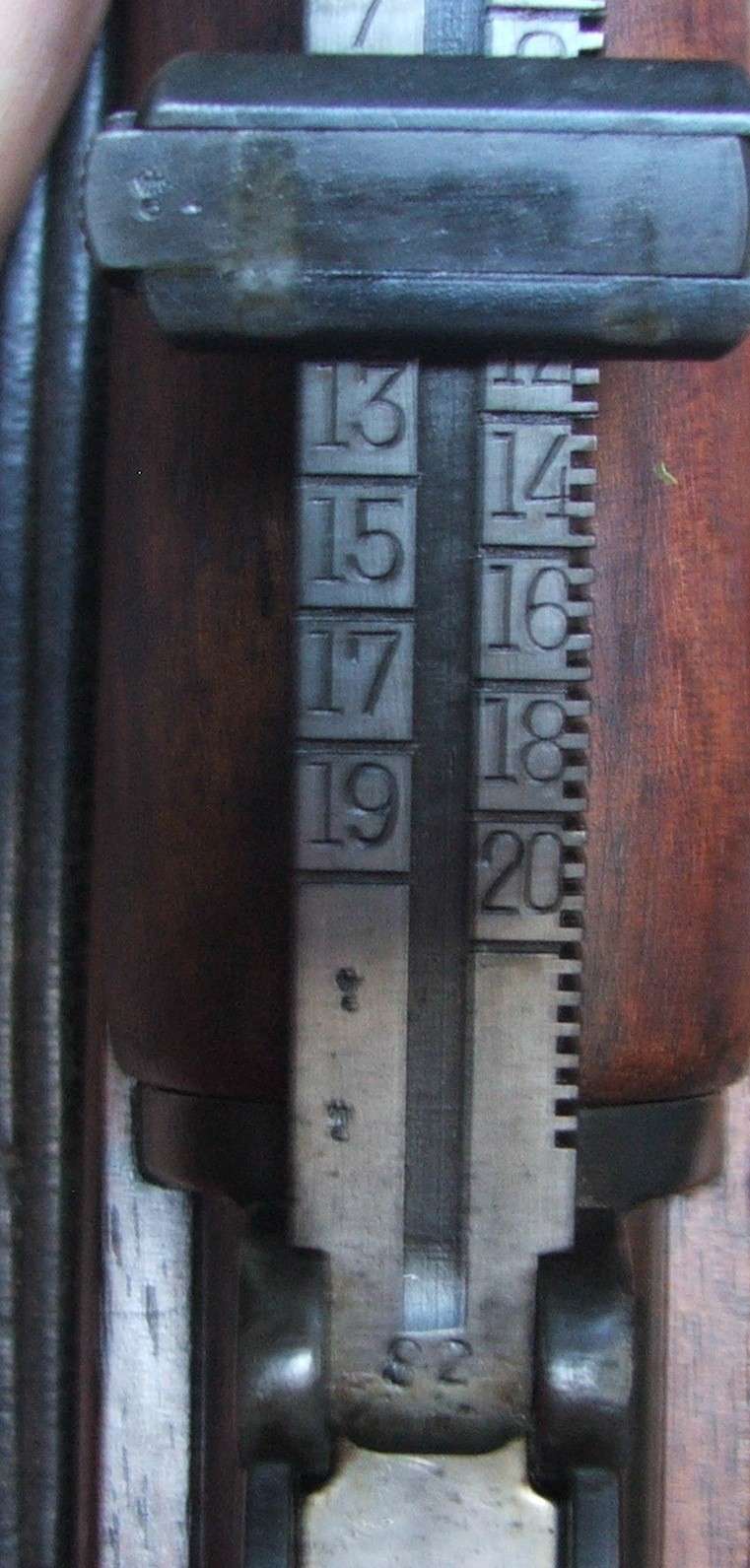
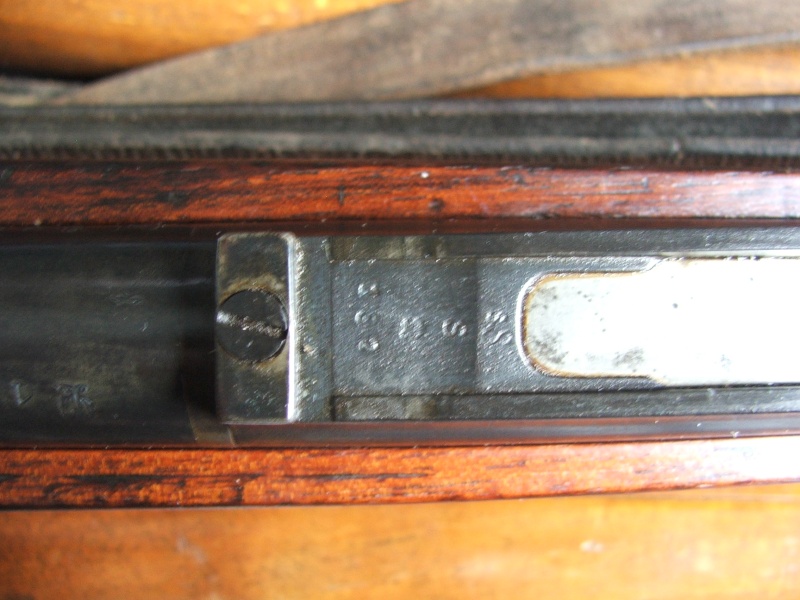
Ou voulais-tu dire "planchette élévatrice du magasin"?

konopka- Pilier du forum

- Nombre de messages : 2626
Age : 54
Date d'inscription : 08/11/2013
 Re: Quid du 98b ?
Re: Quid du 98b ?
C'était bien la planchette de hausse, merci ...
... pour voir si elle était pourvue des "very small Eagle/6" cités plus haut ...
C'est le cas, merci !
A+
... pour voir si elle était pourvue des "very small Eagle/6" cités plus haut ...
C'est le cas, merci !
A+

feder504- Pilier du forum

- Nombre de messages : 10215
Age : 75
Localisation : en France...pour l'instant...
Date d'inscription : 27/01/2011
 Re: Quid du 98b ?
Re: Quid du 98b ?
Au vu de tout ça, finalement... verdict ? 
Malgré la transformation + neutralisation , bonne pioche car modèle qui me parait très précoce, dans la série des premiers 98B (N° de série, S 28 et tout le reste...)? Au moment de l'achat, on me l'avait présenté comme un Mauser de transition - mais j'avais flairé
, bonne pioche car modèle qui me parait très précoce, dans la série des premiers 98B (N° de série, S 28 et tout le reste...)? Au moment de l'achat, on me l'avait présenté comme un Mauser de transition - mais j'avais flairé  que ce n'était pas le cas et qu'il s'agissait peut-être d'un "vrai" 98b.
que ce n'était pas le cas et qu'il s'agissait peut-être d'un "vrai" 98b.
Le fait que l'ensemble culasse, levier d'armement, verrou, etc. ne comporte aucun N° fait-il sens (on dirait en fait que certaines pièces de cet ensemble comportent en très léger et "à la main" la reprise du N° de série)?
Une estimation (pour ceux qui suivent les prix sur le marché des armes neutralisées) ?
Malgré la transformation + neutralisation
 , bonne pioche car modèle qui me parait très précoce, dans la série des premiers 98B (N° de série, S 28 et tout le reste...)? Au moment de l'achat, on me l'avait présenté comme un Mauser de transition - mais j'avais flairé
, bonne pioche car modèle qui me parait très précoce, dans la série des premiers 98B (N° de série, S 28 et tout le reste...)? Au moment de l'achat, on me l'avait présenté comme un Mauser de transition - mais j'avais flairé Le fait que l'ensemble culasse, levier d'armement, verrou, etc. ne comporte aucun N° fait-il sens (on dirait en fait que certaines pièces de cet ensemble comportent en très léger et "à la main" la reprise du N° de série)?
Une estimation (pour ceux qui suivent les prix sur le marché des armes neutralisées) ?

konopka- Pilier du forum

- Nombre de messages : 2626
Age : 54
Date d'inscription : 08/11/2013
 Re: Quid du 98b ?
Re: Quid du 98b ?
Sujet très intéressant.
Konopka, y'a t'il un marquage particulier sur la bretelle de ta Kar98b? Je parle d'un marquage de fabricant, pas un éventuel marquage régimentaire.
Konopka, y'a t'il un marquage particulier sur la bretelle de ta Kar98b? Je parle d'un marquage de fabricant, pas un éventuel marquage régimentaire.
François
"Je demande d'emmener avec moi 600 hommes de la Légion étrangère afin de pouvoir, le cas échéant, mourir convenablement"... (Général Gallieni à Madagascar).

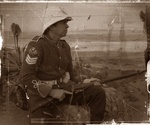
oxi81- Pilier du forum

- Nombre de messages : 10903
Age : 62
Localisation : Entre la mer et le ciel des Corbières
Date d'inscription : 14/11/2010
Page 1 sur 6 • 1, 2, 3, 4, 5, 6 
 Sujets similaires
Sujets similaires» Mosin... ou Nagant civils ?
» Stockage : quid des culasses ?
» quid de ce Luger Bidouillage ou curieuse customisation?
» Fusil Lebel et Gras M.14 produits pendant la Première Guerre
» 270 winchester
» Stockage : quid des culasses ?
» quid de ce Luger Bidouillage ou curieuse customisation?
» Fusil Lebel et Gras M.14 produits pendant la Première Guerre
» 270 winchester
Page 1 sur 6
Permission de ce forum:
Vous ne pouvez pas répondre aux sujets dans ce forum
 Accueil
Accueil Connexion
Connexion S'enregistrer
S'enregistrer